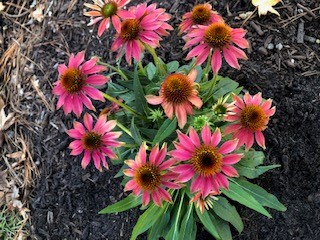Splitting Eastern Purple Coneflower (Echinacea Purpurea)
go.ncsu.edu/readext?834508
en Español / em Português
El inglés es el idioma de control de esta página. En la medida en que haya algún conflicto entre la traducción al inglés y la traducción, el inglés prevalece.
Al hacer clic en el enlace de traducción se activa un servicio de traducción gratuito para convertir la página al español. Al igual que con cualquier traducción por Internet, la conversión no es sensible al contexto y puede que no traduzca el texto en su significado original. NC State Extension no garantiza la exactitud del texto traducido. Por favor, tenga en cuenta que algunas aplicaciones y/o servicios pueden no funcionar como se espera cuando se traducen.
Português
Inglês é o idioma de controle desta página. Na medida que haja algum conflito entre o texto original em Inglês e a tradução, o Inglês prevalece.
Ao clicar no link de tradução, um serviço gratuito de tradução será ativado para converter a página para o Português. Como em qualquer tradução pela internet, a conversão não é sensivel ao contexto e pode não ocorrer a tradução para o significado orginal. O serviço de Extensão da Carolina do Norte (NC State Extension) não garante a exatidão do texto traduzido. Por favor, observe que algumas funções ou serviços podem não funcionar como esperado após a tradução.
English
English is the controlling language of this page. To the extent there is any conflict between the English text and the translation, English controls.
Clicking on the translation link activates a free translation service to convert the page to Spanish. As with any Internet translation, the conversion is not context-sensitive and may not translate the text to its original meaning. NC State Extension does not guarantee the accuracy of the translated text. Please note that some applications and/or services may not function as expected when translated.
Collapse ▲Eastern Purple Coneflower is a herbaceous, drought tolerant perennial plant in the daisy family that is attractive to many pollinators. It offers beautiful flowers in a variety of colors and performs well in Eastern North Carolina. Because of its fibrous root system, it can be divided when it is dormant. Do not try and split Eastern Purple Coneflower while it is flowering or it will die. It is best to wait until late fall or winter when the plant does not have flowers or new growth to divide.

Eastern Purple Coneflower (Echinacea purpurea)
To split this plant, dig up a pre-existing plant a couple inches away from the root ball. After removed from the ground, knock off some of the dirt so that the roots are visible. Next cut the plant in half or leave at least three inches of fibrous roots to transplant then replant in a different location. Water well so that roots can get established. After a month or so, weather permitting, you will have two beautiful plants in your yard.

Eastern Purple Coneflower (Echinacea purpurea)
If there is a particular plant that you have an issue with or need help identifying, visit North Carolina Cooperative Extension or call (252) 222-6352.
Written by Michael W. Thomas – Extension Master Gardener Volunteer – Carteret County




